What is Mortar For?
In traditional brickwork, the mortar is used to combine the bricks together into one structure, with no gaps to ensure a structure is watertight, insulated and stable.
What Is It Used For With Brick Slips?
With brick slips, the structural function of mortar is no longer relevant. The tiles will be attached to the wall with adhesive or in a cladding system, with gaps to fill in with mortar, solely to replicate the traditional brickwork look, joining the tiles together and hiding the wall behind, as grout does with ceramic tiles.
Mortar makes up around 15% of the visual appearance of brickwork, so it's a major part of the look.
What Does That Mean Is Different?
Essentially the mortar then becomes more of an aesthetic product than in full-sized bricklaying- which opens up a few subtle possibilities for design changes but also focuses the mind on other alterations that could be done with bricklaying too.

Blend 4 shown with 3 different mortar colours
So What Choices Do I Have?
The main things to consider are the colour, the finish and the size.
Mortar Size
The size of a mortar joint is usually 10mm, this is the optimal point for strength purposes on traditional brickwork. However, with brick tiles, you don’t have to stick to this. Most people opt for 10mm as it replicates the exact look of brickwork that most people are now familiar with. It could be that from an aesthetic perspective you want more brick and less mortar so choose 7-9 mm for example. These decisions can also be made from the perspective of installation simplicity, where an extra millimetre in the joint can be the difference between a full row, and a row of cut bricks at the top or side of a wall, particularly where pillars are involved.
The considerations you’ll need to make are that the number of tiles you need will increase with the smaller mortar joints, and not as much mortar will be needed. You may also face a little more of a challenge in applying the mortar where the joints are smaller, simply because there isn’t as much space.
Mortar Colour
We sell 3 classic mortar colours, grey, cream and white. These all can bring different looks to your brick slip blend choice so consider them carefully, and browse the product images to see how they look.
You can also use a mortar dye to customise the colour, these are available in charcoal and terracotta for example.
What Are Mortar Dyes?
Mortar dyes or mortar tones are compounds that are added to a mortar mix, they don’t change the properties of the mixture, but are there to customise the colour.
Mortar dye is available in colours ranging from blacks and browns to reds and buff-yellow tones. This means you can have a full choice of what colour your mortar is, you don’t just have to accept a classic grey mortar mix.
Mortar Finish
Another consideration is the finish or profile of your mortar joints. There are a few options, with only aesthetics to differentiate them, you can simply choose your favourite- the most popular ones are the concave (or recessed) and flush joints.

Mixing Mortar
To mix mortar, you need to add your chosen mix (including mortar dye if desired) to a bucket. Add water and combine until the mixture is smooth, and the consistency should hold its shape when you create a well in the mix, but easily slip off a trowel.
You can use a plastic or metal bucket, but we'd recommend a flexible one, so you can easily remove any dried mortar afterwards.

Applying The Mortar
In applying the mortar, we recommend using a mortar gun, or grout piping bag. To use this you simply fill the gun/bag with the mixture, then shake downwards to release the first mortar and shake out any residual air in the gun. You need to carefully fill the gaps, then you can finish your chosen profile with a brick joint.
Do not spread mortar on the tile faces, or try to clean with a wet cloth as this will smear mortar across the bricks, and you will need to use brick acid to remove it.
Make sure you consider the different looks you can achieve, have a look at our inspiration page to see what others have done.







